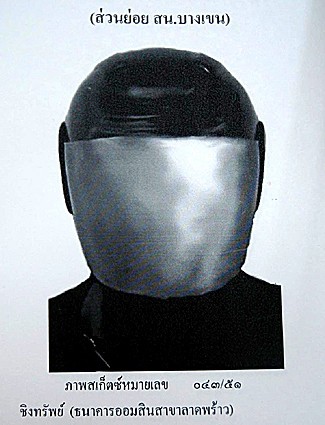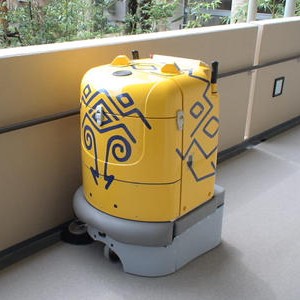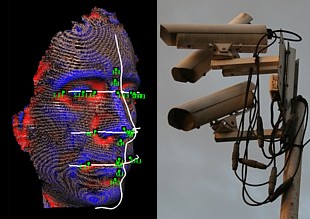
Over the next two months, a team of Japanese explorers hopes to obtain indisputable video evidence confirming the existence of the legendary yeti, the mysterious apelike creature long believed to inhabit the Himalayas of Nepal and Tibet.
A 7-member crew of experienced climbers, led by veteran yeti hunter and mountaineer Yoshiteru Takahashi, will depart Japan on August 16. At their destination in the Dhaulagiri mountains in central Nepal, they will establish base camp at an elevation of 4,300 meters (14,000 ft) and set up an array of automated infrared cameras along a ridge. For six weeks, the men and their state-of-the-art motion-sensitive cameras will monitor the area for signs of the yeti.
The expedition is Takahashi's third attempt to find the elusive creature. The 65-year-old mountaineer first became interested in the yeti while on a climbing expedition in the Dhaulagiri region in 1971, after fellow climbers saw a mysterious humanoid creature covered in gray fur that appeared to be about 150 centimeters (5 ft) tall and walked upright. In 1994, when Takahashi returned to the region on his first mission to find the yeti, he reportedly found small humanoid footprints in a mountain cave that had a strong animal scent. In 2003, on his second expedition, Takahashi and his crew found more mysterious footprints and observed the silhouettes of unidentified humanoid creatures from a distance.
In a written statement on the Yeti Project Japan 2008 website, Takahashi describes the yeti sighting that took place in 2003. "Three dark silhouettes were observed at 12:25 PM on September 27, 2003 on the southeast ridge of Gurja Himal," he writes. "They looked almost human and walked upright on two legs."
According to Takahashi, the expedition crew had long expected to lay eyes on a yeti, but the sighting shocked them nonetheless. At the same time, however, the incident brought a sense of relief because it confirmed that the creature was indeed out there somewhere.
Over the years, numerous yeti sightings have been reported in the region. Takahashi's 2003 encounter -- the 4th sighting known to have occurred on the southeast ridge -- strengthened his convictions about the yeti. In a recent interview with the Asahi Shimbun (who, along with Suntory, is a co-sponsor of the current expedition), Takahashi said, "The yeti is not a bear or a monkey. It is definitely an unknown creature that walks on two legs."
Unfortunately, however, the 2003 expedition (whose sponsors included Pepsi, Suntory, Nikon, and the Asahi Shimbun), failed in its goal to produce visual evidence of the yeti's existence.
But now, five years later, Takahashi and his crew are better equipped than ever to capture the yeti on camera, and they are sure they will succeed this time. Takahashi, who believes clear photographs or video of the yeti will pave the way for future scientific research, says, "We are confident we can prove its existence this time, and once we do, we can start working to protect it."
[Sources: Asahi, Yeti Project Japan 2008]
Related: Seven mysterious creatures of Japan



 Tokyo-based educational company Gakken is recalling 10,000 of their electronic talking Smart Globes following a rash of customer complaints about a mislabeled Taiwan. On the globes, Taiwan -- a self-governing nation that split from communist China in 1949 during a civil war -- is labeled as "Taiwan Island," and the globe's smart pen reader, which streams audio data about a nation's geography, history and culture whenever you touch its location on the globe, identifies Taiwan as part of the People's Republic of China.
Tokyo-based educational company Gakken is recalling 10,000 of their electronic talking Smart Globes following a rash of customer complaints about a mislabeled Taiwan. On the globes, Taiwan -- a self-governing nation that split from communist China in 1949 during a civil war -- is labeled as "Taiwan Island," and the globe's smart pen reader, which streams audio data about a nation's geography, history and culture whenever you touch its location on the globe, identifies Taiwan as part of the People's Republic of China.  An autonomous robot janitor built by Subaru (Fuji Heavy Industries) and Sumitomo has landed a job cleaning the outdoor hallways of a new 14-story Bali-themed luxury apartment complex in Tokyo. Lovingly nicknamed 'Tondon' in an apparent reference to a legendary Balinese snake god, the robot is a close relative of
An autonomous robot janitor built by Subaru (Fuji Heavy Industries) and Sumitomo has landed a job cleaning the outdoor hallways of a new 14-story Bali-themed luxury apartment complex in Tokyo. Lovingly nicknamed 'Tondon' in an apparent reference to a legendary Balinese snake god, the robot is a close relative of  On July 19, electronics giant NEC announced it has developed the world's first automated border control system that uses facial recognition technology capable of identifying people inside their automobiles. The system is already in operation at checkpoints on the Hong Kong - Shenzhen border.
On July 19, electronics giant NEC announced it has developed the world's first automated border control system that uses facial recognition technology capable of identifying people inside their automobiles. The system is already in operation at checkpoints on the Hong Kong - Shenzhen border.  This story is not from Japan, but I couldn't resist...
This story is not from Japan, but I couldn't resist... Asia's first confirmed case of
Asia's first confirmed case of  The Hiroshima Peace Memorial Museum's
The Hiroshima Peace Memorial Museum's